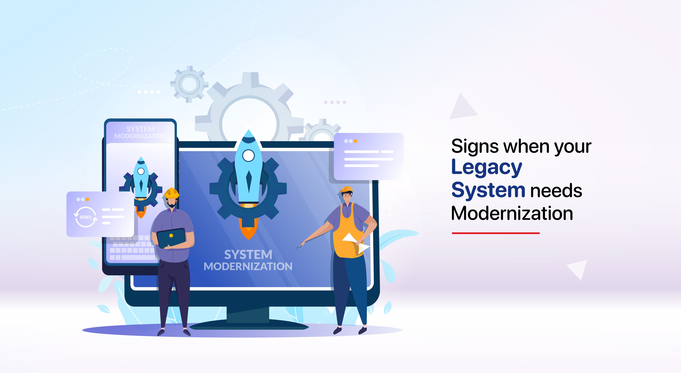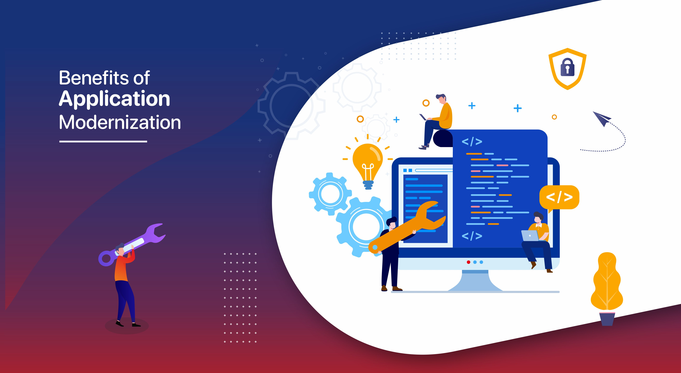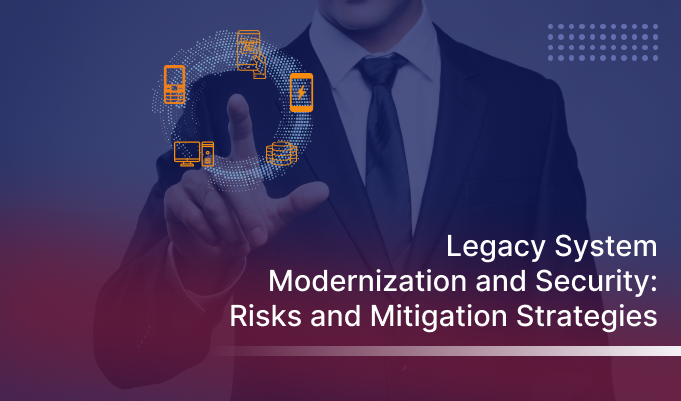CTO's guide to modernizing legacy systems


How to choose the right modernization approach for your organization.
Over the past five years, a significant majority of organizations have taken strides towards executing digital transformation initiatives. However, despite this progress, only few of them have been able to achieve the desired outcomes. This highlights the challenges and complexities involved in digital transformation, and the need for a strategic approach that addresses the specific needs and goals of each organization.
In most cases, complex legacy technology and business critical legacy systems play major roles in acting as the main bottleneck.
Modern enterprises are made up of a complex ecosystem of people, systems, infrastructure, applications, and processes that operate non-stop. For a CTO leading a digital transformation, the first step will be to analyze and untangle these components in order to move forward.
CTO’s role has now changed a lot and just not limited to technology aspects, they have also evolved as Chief Transformation Officers with below responsibilities:
- CTOs are responsible for identifying new technologies and analyzing how they will impact internal IT processes and external service delivery.
- They must also evaluate the challenges and opportunities associated with these technologies, with a focus on aligning them with the company's broader business goals.
- CTOs analyze and formulate new business cases to support modernization, both internally and externally.
- This includes identifying opportunities for innovation, streamlining processes, and improving overall efficiency.
- CTOs oversee the execution of new technology implementations and ensure successful adoption by all personnel.
- Effective communication, stakeholder management, and a deep understanding of the organization's culture and capabilities are critical for CTOs to be successful in their role.
- Through strategic thinking, innovation, and leadership, CTOs can help drive transformational change and position their organizations for long-term success in today's digital landscape.
Key Challenges faced by CTOs
Invest in Resources and change management
Digital transformation requires organizations to untangle outdated legacy systems and hire people with expertise in new technologies. This presents a challenge that requires a focus on the people side of change management, including creating new roles, establishing reskilling and training programs, and continuously educating teams.
The success of these efforts is critical to the success of further technological changes. Therefore, organizations must invest in their employees and provide them with the resources they need to adapt and thrive in a rapidly evolving digital landscape.
Low digital literacy and resistance
While many assume that technology is the main obstacle in the digital transformation journey, the reality is that people and processes present the biggest challenges. A recent survey found that around 90% of executives identified people and processes as a roadblock to successful execution. This is often due to low levels of digital literacy across the organization, which leads to low stakeholder and end-user engagement.
To address these challenges, modernization programs must focus on both technology and the "human transformation" element. This requires close collaboration between CTOs, COOs, and HR executives to identify necessary digital competencies and staffing needs. Neglecting the human aspect of digital transformation can hinder the potential for transformative change, as technology alone cannot drive success without the right people and processes in place.
Costs and Returns for Modernization:
Legacy application modernization can be a daunting task as it involves several unknown dependencies, timelines, and ROI projections. According to Gartner, enterprises need to spend at least $3 on modernizing their legacy application portfolio for every dollar invested in digital transformations by the end of 2020. A Deloitte survey revealed that it takes around 4+ years for 46% of companies to start seeing returns on core systems transformation initiatives.
As a CTO, you may face challenges in justifying the cost of legacy modernization due to the difficulty in making estimates. However, highlighting the current expenses of maintaining outdated systems could help persuade stakeholders. On average, large enterprises spend up to 80% of their budgets on keeping old, ineffective systems running. Neglecting modernization could result in bloated maintenance costs and lost growth opportunities, as most legacy systems lack the IT budget for innovation.
Security Risks:
Legacy systems reaching their end-of-support date or those that have become outdated pose a significant security risk. Modernizing these systems and migrating them to the cloud or a hybrid environment can increase heterogeneity and broaden the required defense perimeter, creating a security challenge. As a result, new cybersecurity strategies are necessary for successful and sustainable digital transformation.
Co-existence of legacy and modern systems:
One of the critical steps in any business transformation journey is the final migration, which can be challenging to execute without causing disruptions and downtime. Typically, data migration cannot be done all at once or new applications cannot be shifted in a matter of hours. As a result, CTOs face a stressful transition period where they have to ensure seamless business coverage while dealing with several side issues, such as:
- Ensuring fully functional overlapping functionality.
- Managing data duplication and avoiding data loss.
- Introducing new systems in phases and migrating users in batches.
- Setting up interim IT solutions to bridge the legacy and new systems.
To navigate these challenges, solid legacy system modernization strategies and meticulous planning are essential.

Modernizing Tips for The CTOs
- Needs assessment and modernization priorities: Must speak with different stakeholders and collect information like the value provided by legacy system, business logic used, issues and inefficiencies with current legacy system, most utilised and unutilized part of the system, new functionalities needed in the system, and glitches and limitations.
- Check readiness to migrate to new solution: Must check necessary infrastructure availability, evaluate cost by rationalising softwares and licenced products required as part of replacement etc
- Perform Inventory assessment: Introduce service and data access layers, encapsulate key data and functions in the application, and plan monolithic to microservices architecture.
- Portability priority: Enable complete portability across cloud environments, container tools, server and storage options which will eventually also help to eliminate vendor lock-in.
- Migrate to modern data platform: Adoption of new analytics solutions such as BI, big data and predictive analytics, or even sophisticated AI-powered systems require modern data platforms. If not migrated, it becomes a road block for data driven initiatives and visualisation.
- Make appropriate future plans: Do not repeat the same mistake while creating legacy software, need to follow and make sure proper documentation, development plans, support and maintenance, source code management, coding best practices.
- The transformation of your organization through effective legacy modernization requires a thoughtful plan, the appropriate personnel, and an appropriate IT technology stack working in unison. Language Lens, helps CTOs and Product Owners with all key information, reports and tools required to plan and execute a successful modernization journey by eliminating potential risks.
Tag:Legacy- Modernization